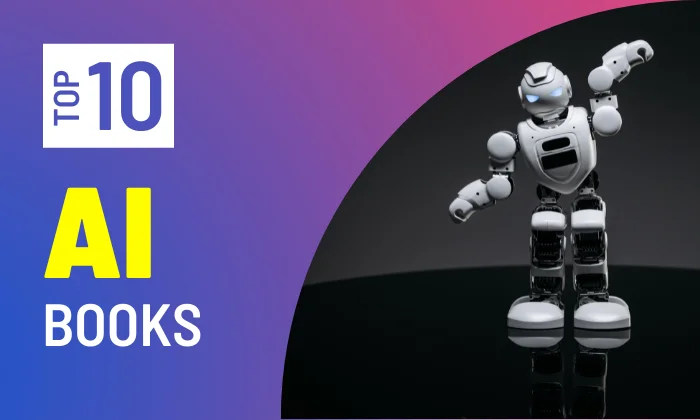These are the top 10 Data Structures and Algorithms books that will help you learn and implement Data Structures and Algorithms.

1. A Common-Sense Guide to Data Structures and Algorithms, Second Edition
by Jay Wengrow
Data structures and algorithms are considerably more than complex notions. Mastering them allows you to produce faster and more efficient code, which is crucial in today’s technology environment. Updated chapters on recursion, dynamic programming, and leveraging Big O in your daily work are included in this new and rewritten second edition. This book teaches the reader how to use the recursion process to solve difficult issues and design algorithms that are orders of magnitude quicker than the alternatives. Extensive data structures such as trees and graphs can improve the development of particular applications such as social networks and mapping tools. Exercises with comprehensive solutions are included in each chapter to help you practice your new skills.
2. Data Structures and Algorithms Made Easy: Data Structures and Algorithmic Puzzles 5th Edition
by Narasimha Karumanchi
This is a book that has many answers to problems using sophisticated data structures and algorithms. Computer scientists will find it useful as an interview and exam guide. Readers in the computer science field can use it as a reference manual. This book will help you prepare for interviews, exams, and work on campus. In a nutshell, this book provides solutions to a wide range of difficult data structures and algorithmic issues.
This book covers many basic topics of data structure programming like recursion, trees, queues, stacks, and many more. There are also complex topics in this book which are searching, greedy algorithms, complexity classes, and many others.
3. Introduction to Algorithms, 3rd Edition (The MIT Press)
by Thomas H. Cormen
This textbook is remarkable in that it combines precision and variety. The book goes deeply into a wide range of algorithms while making their creation and analysis approachable to readers of all skill levels. Each chapter is self-contained and can be studied as a study unit on its own. The algorithms are given in English and pseudo-code that anyone who has done some programming may understand. The explanations have been kept simple without losing the depth of information or mathematical precision. The book has been fully reviewed and updated in this edition. There are two whole new chapters on trees and multithreaded algorithms in this edition. For this edition, many new exercises and problems have been included in this edition.
4. Problem Solving with Algorithms and Data Structures Using Python 2nd Edition
by Bradley N. Miller, David L. Ranum
This is a computer science book. Understanding what computer science is all about requires an understanding of algorithms and data structures. Learning computer science is similar to learning any other challenging subject. This textbook is designed to serve as a text in a first-year data structures and algorithms course, which is often taught as the second subject in a computer science department. Although the second course is more difficult than the first, this book is written with the assumption that you are a beginner at this level. You might still be struggling with some of the fundamental concepts and abilities from your first computer science course, but you’re ready to dig further into the subject and keep practicing problem-solving.
5. The Self-Taught Computer Scientist: The Beginner’s Guide to Data Structures & Algorithms 1st Edition
by Cory Althoff
In his book, the author explains why a computer science degree isn’t required to program professionally and teaches the programming foundations he used to progress from a total beginner to a software engineer at any multi-national software corporation.
The author teaches you the computer science basics that all self-taught programmers need to know to succeed. This book will help you not only become a better programmer but also pass your technical interview.
Reading this textbook can help you advance your programming career, whether you’re applying for jobs or brushing up on your computer science expertise. It’s written for complete novices, so even if you’ve never studied computer science before, you should have no trouble reading it.
6. Data Structures and Algorithms in Java 2nd Edition
by Robert Lafore
Despite the fact that the subject matter is complex, this book is intended to be easy to read and understand. Algorithms are the processes used by computer programs to alter data structures. A workshop is included as a short demonstration application executable in a Web browser, in addition to clear and simple example programs. The applications show what data structures look like and how they work in graphical form. The program is rebuilt in the second edition to improve operation and clarify the algorithms, the example programs are updated to run with the most recent version of Java, and questions and exercises are included at the end of each chapter to make the book even more useful.
7. Data Structures & Algorithm Analysis in C++ 4th Edition
by Mark Weiss
This is a book about advanced algorithms that finishes the vacuum between traditional “CS2” algorithms and algorithm analysis courses. As computer speed and power rise, so does the demand for good programming and algorithm analysis. By addressing these abilities concurrently, the book shows readers how to write well-structured, maximum-efficient programs in the C++ programming language.
This book covers everything from binary heaps to sorting to NP-completeness, and it includes an entire chapter on iterative analysis and advanced data structures, as well as how to implement them. The authors’ meticulous, rigorous, and in-depth explanation of each form of algorithm is aided by figures and examples explaining different steps of algorithms.
8. Data Structures and Algorithms in Python 1st Edition
by Michael T. Goodrich, Roberto Tamassia, Michael H. Goldwasser
This textbook provides a comprehensive, definitive introduction to data structures in Python by acclaimed writers, based on the authors’ market-leading data structures books in Java and C++. The first major object-oriented book for the Python data structures course in Data Structures and Algorithms in Python. The material will adhere to the same general pattern in order to provide a thorough introduction to data modeling, covering its development, analysis, and implementation. This book covers the study and design of fundamental data structures in great detail. There are also hundreds of tasks to encourage creativity, teach readers how to think like programmers, and reinforce key topics.
9. Data Structures and Algorithms 1st Edition
by Alfred Aho, Jeffrey Ullman, John Hopcroft
The data structures and techniques that underpin much of today’s computer programming are presented in this book. The content in the first six chapters of the previous book, the design, and analysis of computer programming, forms the backbone of this book. The language for programming in this book is Pascal. The writers tried to address data structures and algorithms in a broader sense. In the description and implementation of algorithms, the authors attempted to employ abstract data types informally. Abstract data types are only now beginning to appear in widely used programming languages, which is critical for any programming language.
10. Algorithms + Data Structures = Programs (Prentice-Hall Series in Automatic Computation) 1st Edition
by Niklaus Wirth
The first chapter of this book is about data structure. Before the reader can undertake operations, he or she must have some objects. This book assumes that the reader has a basic understanding of computer programming concepts. Introduction to programming classes, on the other hand, focuses on algorithms that operate on relatively simple data structures. The core notion of this book’s theory is that data are, first and foremost, abstractions of real-world phenomena that are best stated as abstract structures. During the program development process, the data representation is gradually modified in tandem with the algorithm to conform to the limits given by the available programming system. This new Edition’s appearance represents a trend that has had a significant impact on publications.
Stay tuned to AiHints for more insightful tutorials on web development, programming, and artificial intelligence. Happy coding!


